ASUS ZenBeam L2
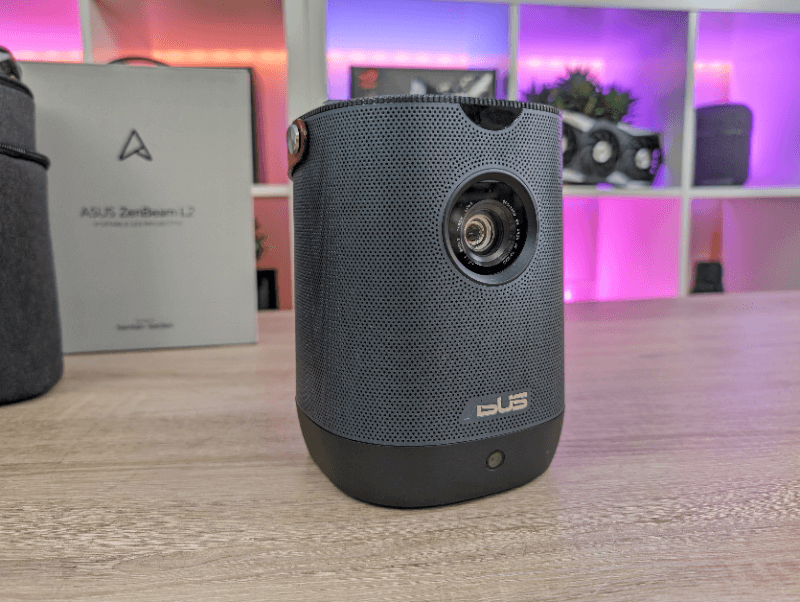
Specifications
- Display Technology: DLP
- Light Source: LED
- LED Lifespan: 30000 hours
- Resolution (Native): 1920x1080 (FHD)
- Maximum Input Resolution: 3840x2160
- Brightness: 960 LED Lumens/ 400 ANSI Lumens
- Contrast Ratio: 400:1
- Color Saturation (NTSC): 120% sRGB
- Display Colors: 16.7 M
- Throw Ratio: 1.2:1
- Projection Distance: 0.8 ~ 3.2 meters
- Projection Size: 30"~120"
- Projection Offset: 100%± 5%
- Zoom Ratio: Fixed
- Focus: Auto
- Speaker: Yes (10W with Smart AMP technology)
- Audio Technology: Harman/Kardon
- HDMI: x1, Micro HDMI-internal x1 (for TV box)
- USB-C (DP): Yes, DP+PD
- USB-A: x 1 (Power output 5V/1.5A)
- Audio Out: Yes
- Battery Capacity: 65Wh, 6-cell Lithium-ion battery
- Battery Life (Max.): Up to 3.5hr (Battery Low mode)
- Acoustic Noise (Standard): 30dBA
- Acoustic Noise (ECO/Low): 28dBA
Details worth noting here is that it is truly a portable solution. There is, for example, a built-in battery, so you can use the ZenBeam L2 without access to electricity. At the same time, there is a good selection of automatic settings.
A tour around the ASUS ZenBeam L2
The ZenBeam L2 is designed to be a portable solution, and this can also be seen in the design. Partly the size is something to deal with, with a height of just over 17 cm and a weight of 1.57 kg. At the top there is a small leather strap, which makes the ZenBeam L2 easy to carry and move.

The design is subdued in dark blue and black plastic with a nice matte finish. On the back there is a power button along with the selection of inputs and outputs at the bottom of the unit. Here we find a USB C connector, which is used for power from the included adapter. In addition to that, we get a USB A port that can be used as a charger, a USB C for DisplayPort input, an HDMI connector and finally a 3.5mm connector if you want to connect external speakers or a headset.
However, a 10W speaker from Harman Kardon is built in, which takes care of the sound if you don't connect anything else.

At the top of the device we find buttons for operating the device for things like menus, sound and image. However, the entire top can be removed, revealing the space underneath for the included HAKO Mini Android TV Box. It is connected at the top via a mini HDMI and a micro USB plug and can then be controlled via the remote control that is also included in the set.
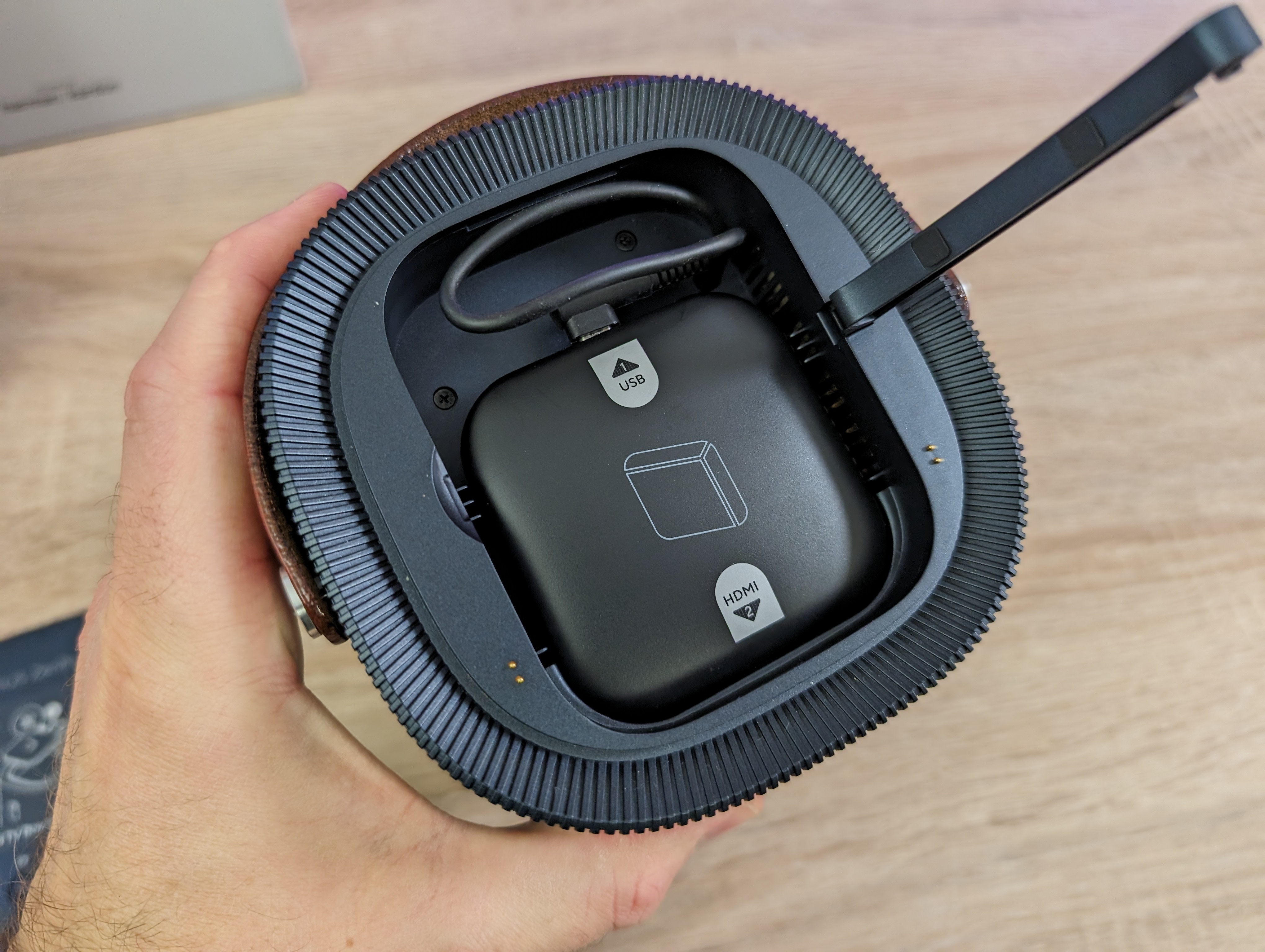
I am perhaps a little surprised that it is not simply solved with an internal solution instead, but once the small box is mounted, it runs by itself.

In the front of the device we find the projector lens, which gives us a native resolution of 1920x1080 and up to 960 LED Lumens brightness. It is a Short Throw projector that can be used fine in smaller rooms. At a distance of about one meter it can provide a 40" image, while out at 3.1 meters it manages a 120" image.
Also included in the box is a practical storage and transport bag for the ZenBeam device along with the power adapter and an HDMI cable.
There's room for everything in the bag with a dedicated pocket for the cables, which makes it really easy to take ZenBeam with you on the go.
Software
The software experience is slightly divided on the ZenBeam L2. There are the menus to control the settings on the ZenBeam L2 itself and then the Android TV part is split into itself as it runs on the included HAKO Mini unit mounted on top of the ZenBeam.

Setup is fairly straightforward and starts automatically the first time you start the ZenBeam L2. From here it is simply a matter of following the instructions and possibly logging into your WiFi and your Google Account, if it is to be used together with Android TV, YouTube, etc. The whole thing can be controlled via the included remote control.
The menus for the ZenBeam L2 can be a little confusing, it is not always clear what the various menu items cover. So there is a bit of a learning curve with just figuring out what you actually adjust by selecting the different menus and settings.
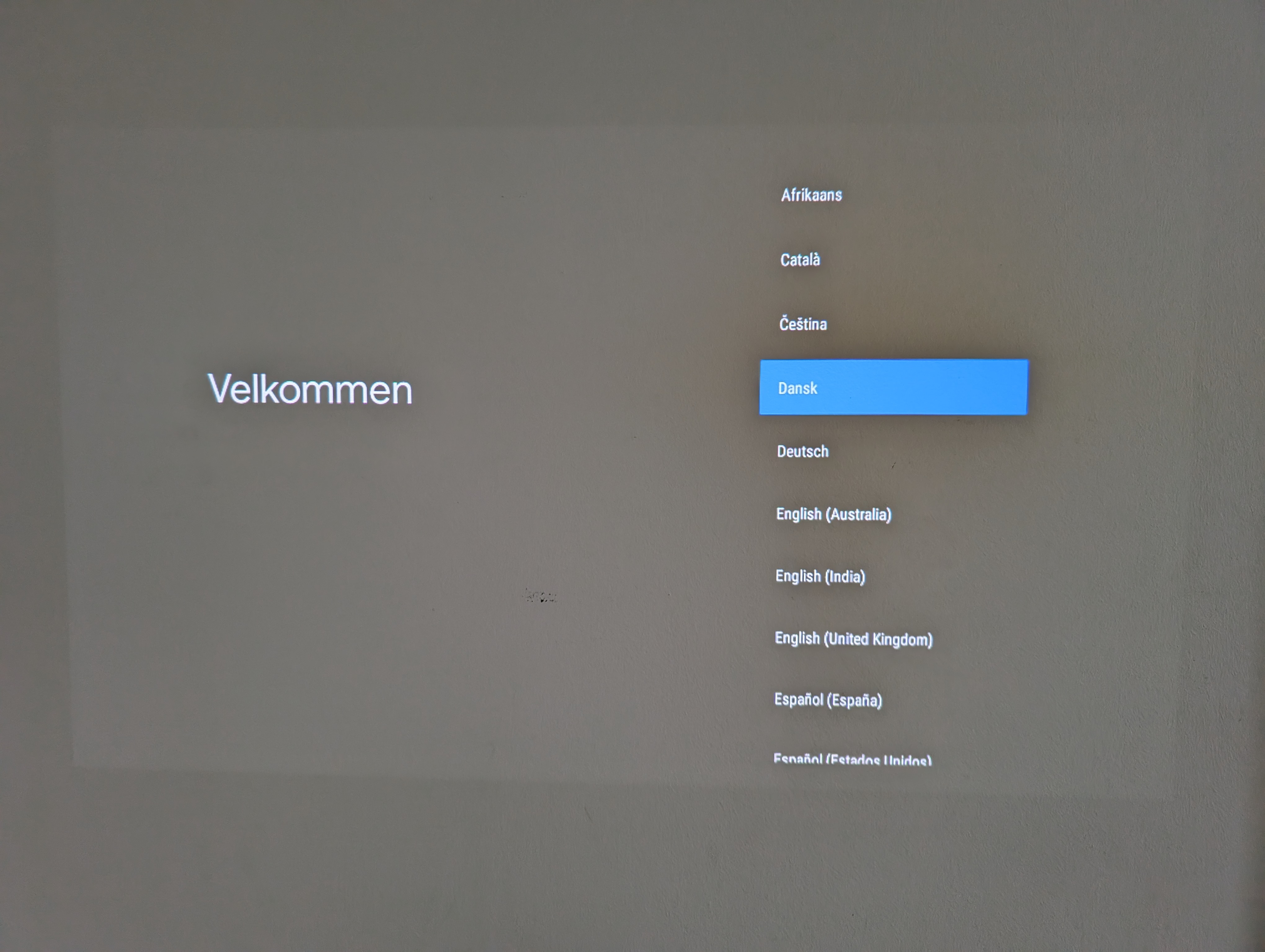
Once you have gotten to know the menus, there are however reasonably good options for customizing colors and images, so that you get the best out of ZenBeam, depending on where you have placed it.
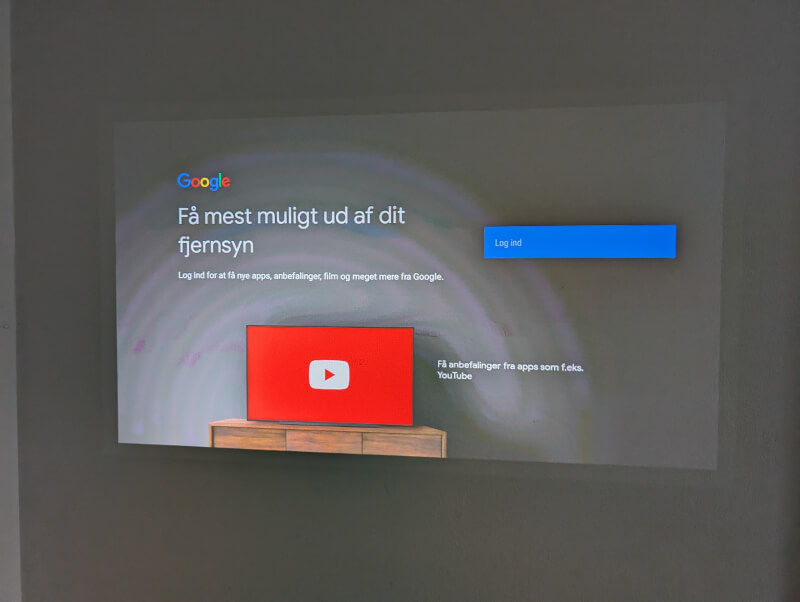
The other software part is the Android TV part, which is pretty standard and recognizable if you've tried other Android TV devices.
You can install apps separately via the Android Store if you want, and there's a wide selection of apps for streaming and general media content.
The test
I've been testing the ASUS ZenBeam L2 for a few weeks with a variety of different inputs. It has been movies and series via the "built-in" Android TV solution or via Chromecast from my phone, but also for a bit of gaming via a connected Nintendo Switch.

Even though the brightness of the ZenBEam L2 is really good, for such a small projector, I would immediately say that it is not much to watch content on it or play in daylight. Here, the 960 LED lumens corresponding to around 4000 ANSI Lumens cannot keep up, and slightly darker images in particular disappear in the strong light from the surroundings.
In darker environments, however, it is no problem to have a good experience with the ZenBeam L2.

The automatic focus and keystone functions meant that without having to do anything other than press a single button, I got a sharp and adjusted image, even if I hadn't positioned the ZenBeam L2 perfectly.
ZenBeam delivers really good and clear colours, and the level of detail is really fine, although it can of course be seen that we are working with a 1080 resolution if you extend it to the 120" size.
If you use ZenBeam without being connected to power, you can squeeze up to 3.5 hours of use out of it. However, it requires that you use Battery: Low settings, where the brightness is limited to 240 LED Lumen. So here it will require that you are in a dark room to get good results.
After all, the possibility of getting so many hours out of it on the battery is still delicious and with the curtains down or in the evening, it is enough to get through even the long movies.

A small detail that I also have to talk about is the sound from the ZenBeam L2. It creates some heat to run the hardware and LED light source that is used, and this also means that some cooling is needed in the form of a fan. It is not completely silent and this may be something that you should be aware of, depending on how sensitive you are to this sort of thing.
ASUS itself states the noise at between 28 and 30 dBA, but my measurements with the dBA meter I normally use showed results between 30 and 45 dBA, depending on which side I measured on.
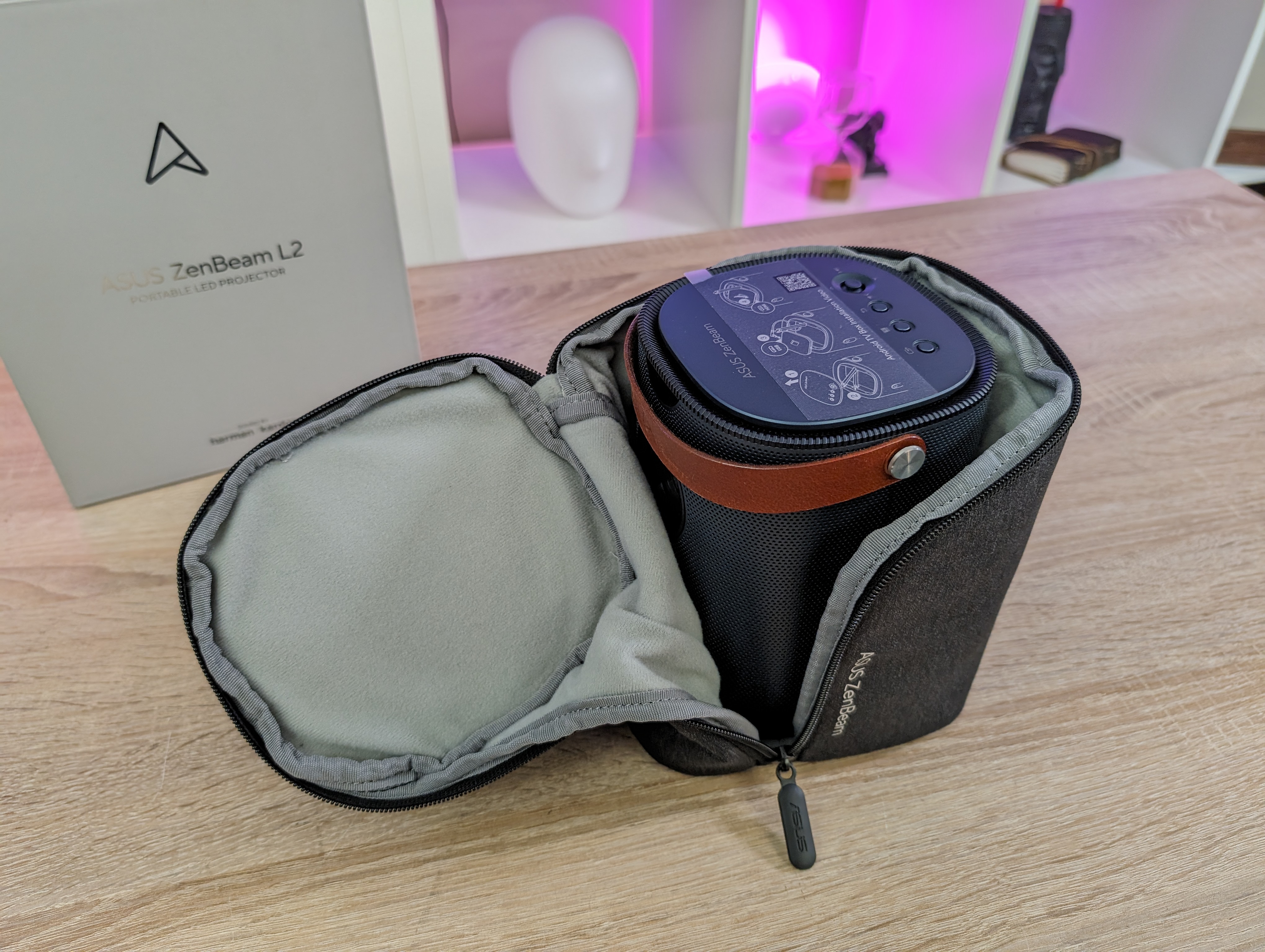
It can be heard as a buzzing/hissing sound if there are no others around to drown it out. However, it is not something that is not quite easily drowned out by the sensible built-in Harman Kardon 10W speaker when you start a movie or series.
The other side of the sound is of course the built-in Harman Kardon speaker. It does the job quite reasonably for its size.
However, it naturally does not provide the booming cinema experience that you are used to with a real sound system. Taking the portable form factor into account, you get decent sound in the package, even if it lacks a little bottom at the heavy end.
Price
At the time of writing, I can find the ASUS ZenBeam L2 with an online price of around 800$. It is a good deal more expensive than a comparable solution, such as a Nebula Capsule 3, which can be had for around 200$ less.
Conclusion
With the ZenBeam L2, ASUS has created a compact and beautiful solution for those who are in the market for a portable and potentially wireless projector.
Sensible sound and brightness combined with good images that automatically focus can provide a good movie experience, even in small settings or outside the home. If you combine it with built-in Android TV and a battery with enough strength for 3.5 hours of entertainment, it is a good solution that is easy to carry.

It's not a solution aimed at film and hi-fi enthusiasts, but that should almost go without saying with the highly transportable form factor. However, ASUS has struck a reasonable balance between performance, features and size.
The biggest weakness right now is the price, which is on the high side compared to similar products.
We end up with a final grade of 8, for a solid solution that is well priced a little too expensively.
Pros:
- Easy setup
- Good automatic functions
- Reasonable picture and sound
- Battery for several hours of entertainment
- Transport bag included
Cons:
- The price
Latest gadgets
-
23 Maygadgets
-
01 Maygadgets
Swytch launches Swytch Max+ Kit
-
10 Margadgets
DJI AIR 3S
-
03 Margadgets
Razer Wolverine V3 Pro
-
21 Febgadgets
OBSBOT Tiny 2 SE
-
13 Febgadgets
Corsair launches Platform:4
-
17 Jangadgets
Nerdytek Cycon3
-
16 Jangadgets
DJI Launches DJI Flip - A Small Foldable Drone
Most read gadgets
Latest gadgets
-
23 Maygadgets
LaserPecker LP5 Laser Engraver
-
01 Maygadgets
Swytch launches Swytch Max+ Kit
-
10 Margadgets
DJI AIR 3S
-
03 Margadgets
Razer Wolverine V3 Pro
-
21 Febgadgets
OBSBOT Tiny 2 SE
-
13 Febgadgets
Corsair launches Platform:4
-
17 Jangadgets
Nerdytek Cycon3
-
16 Jangadgets
DJI Launches DJI Flip - A Small Foldable Drone






